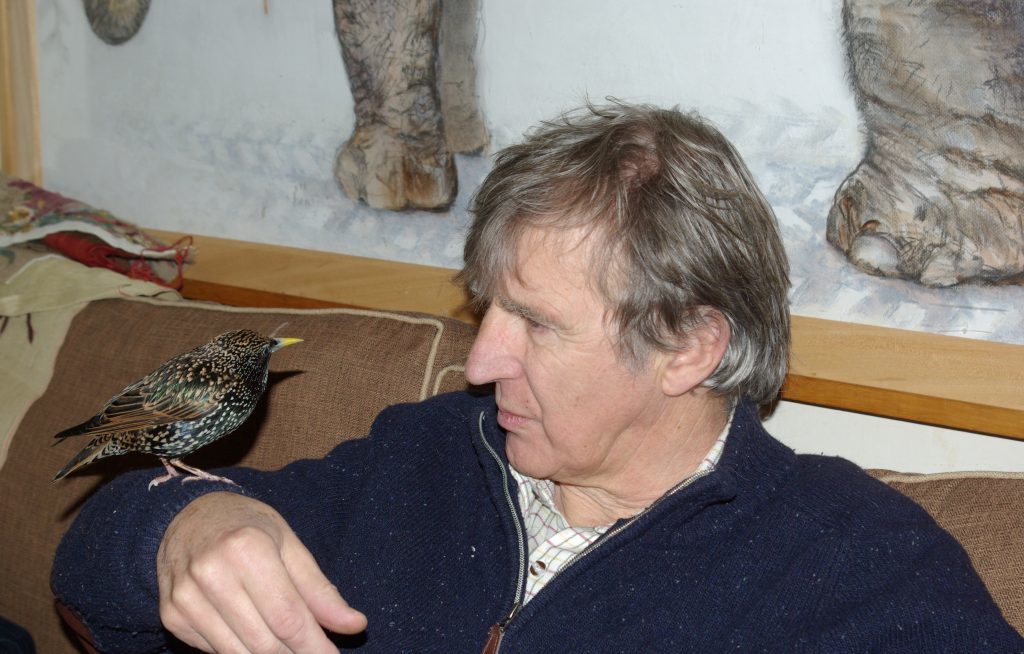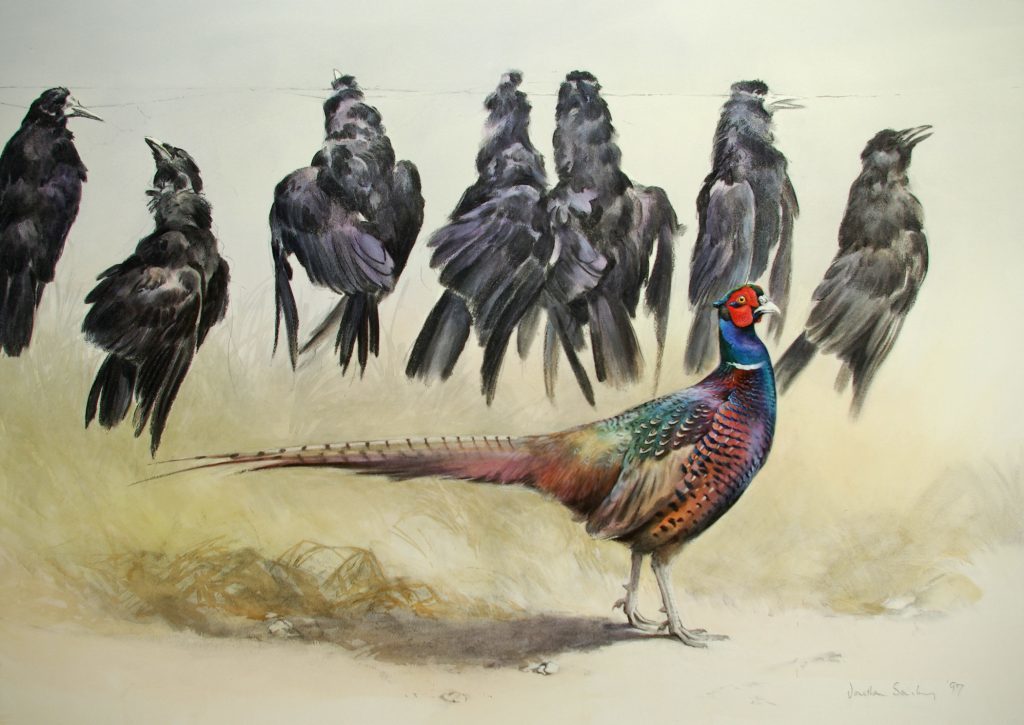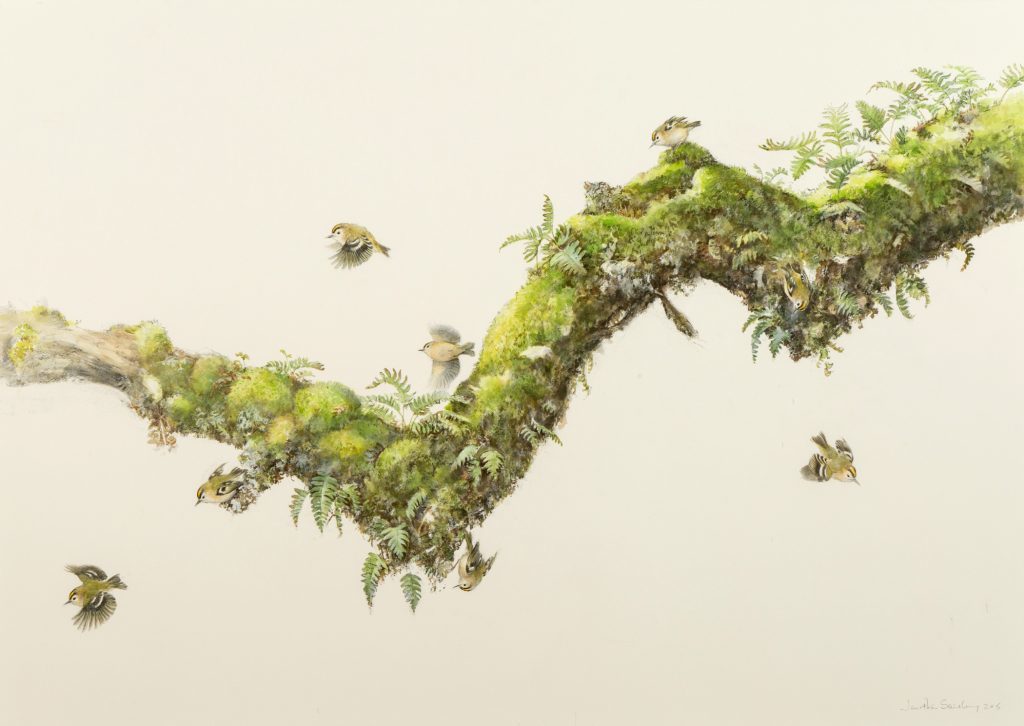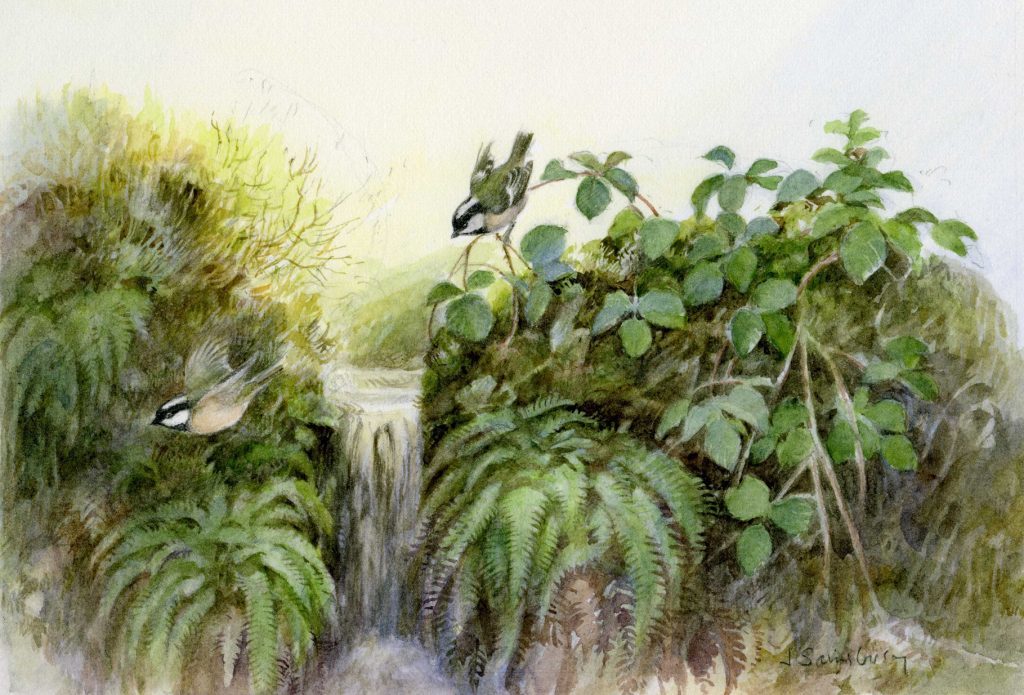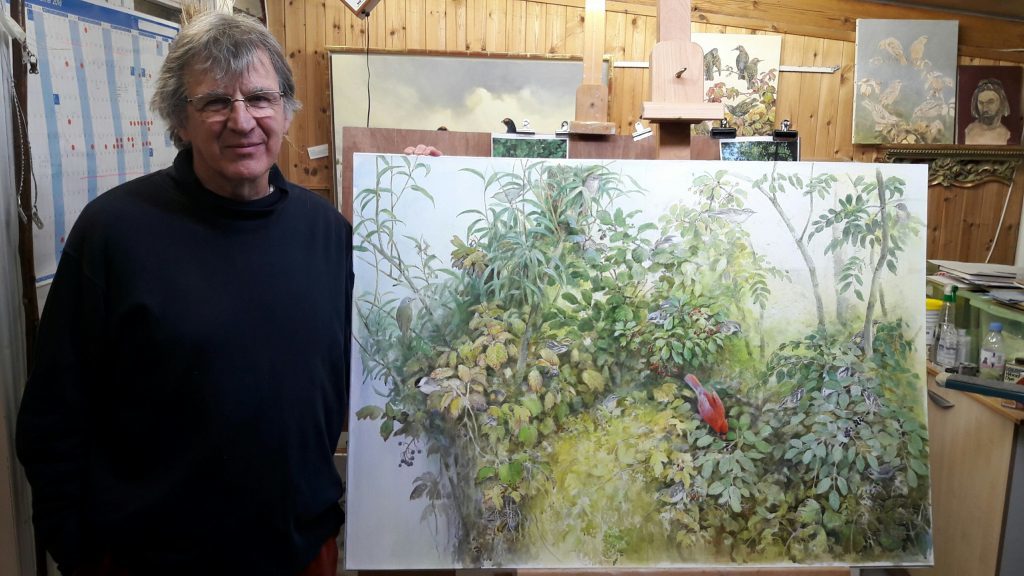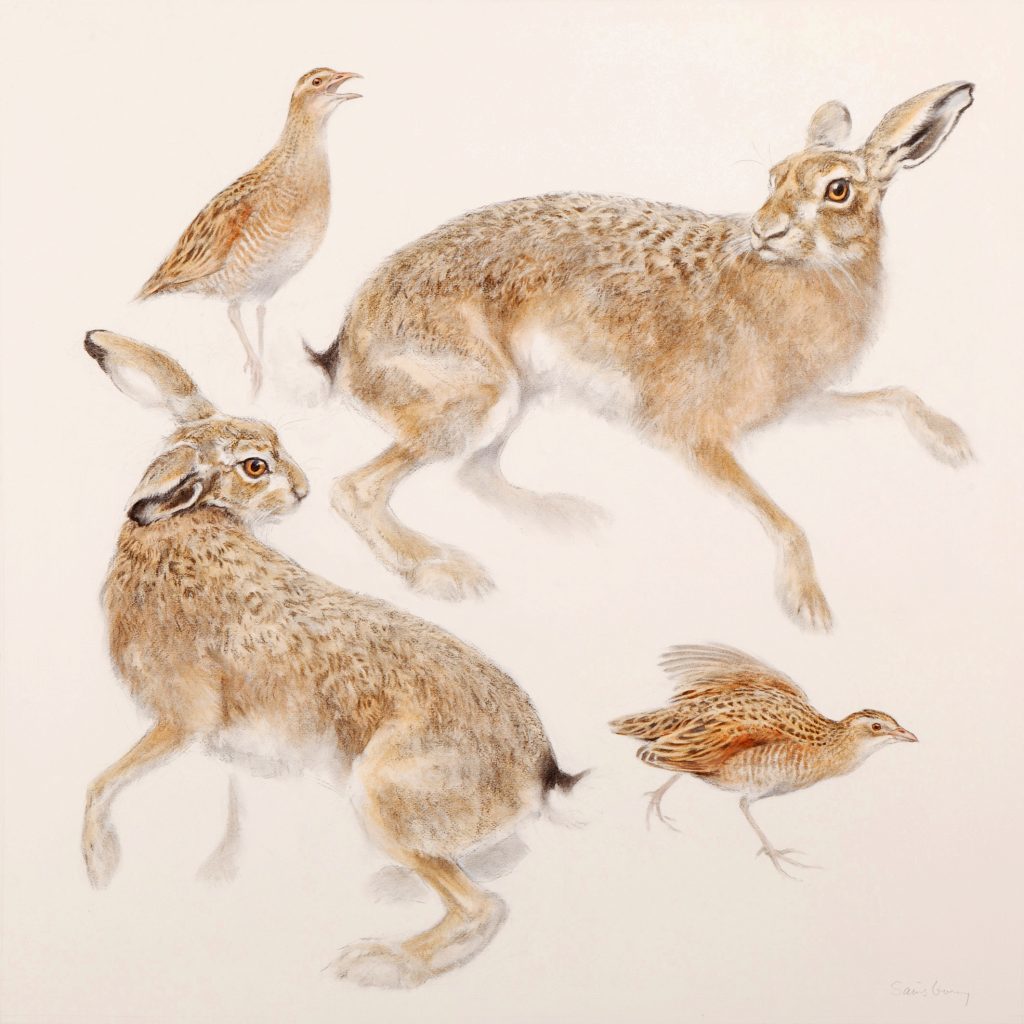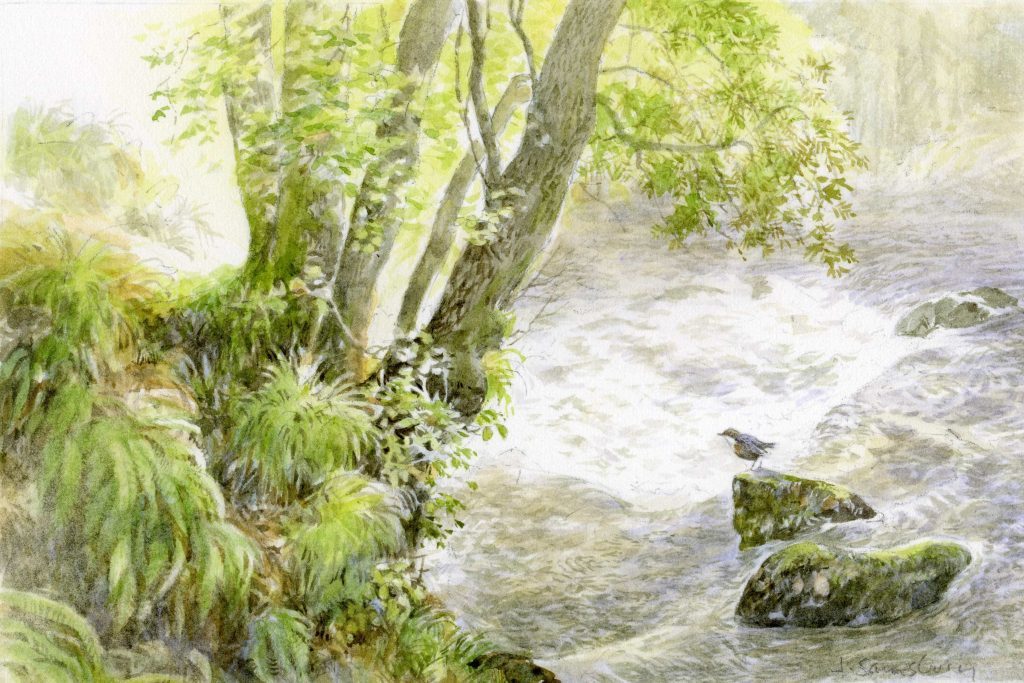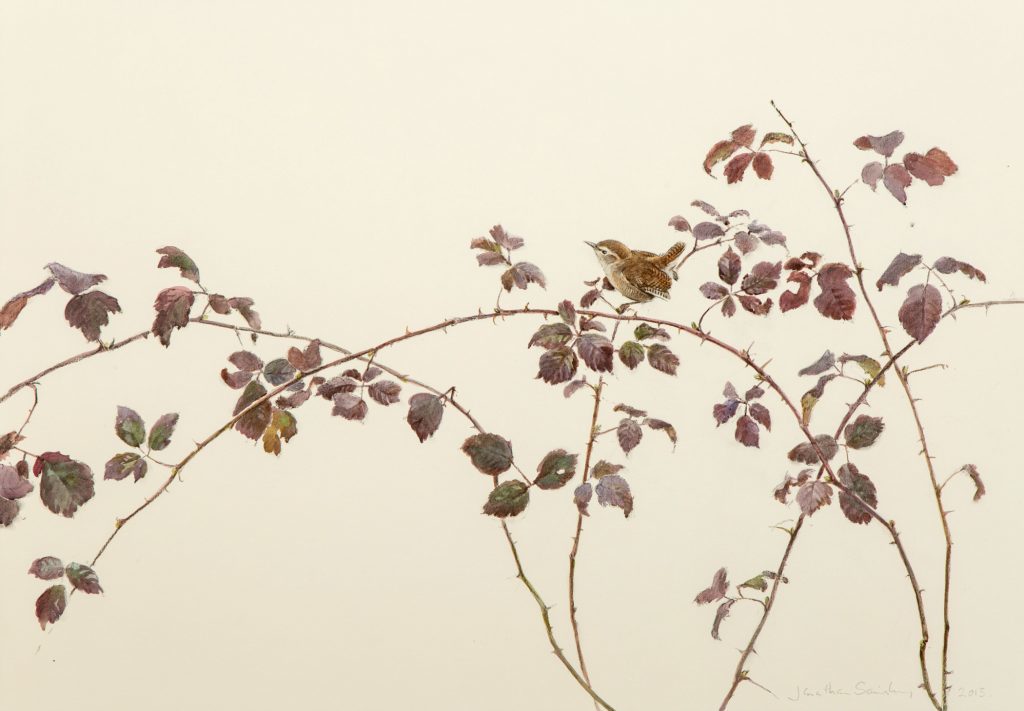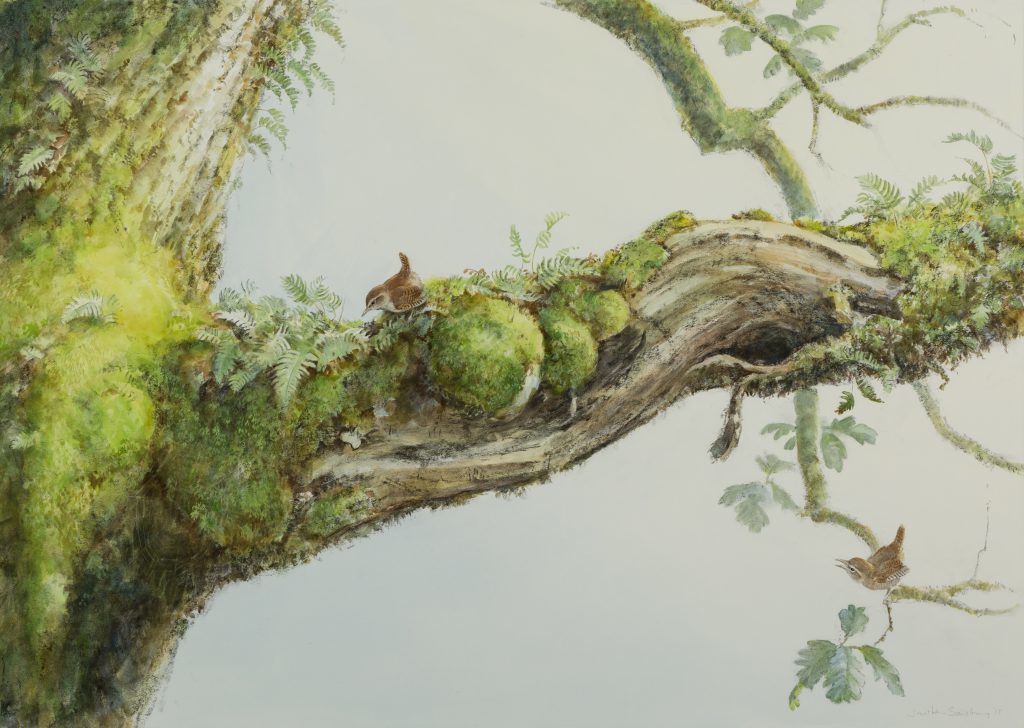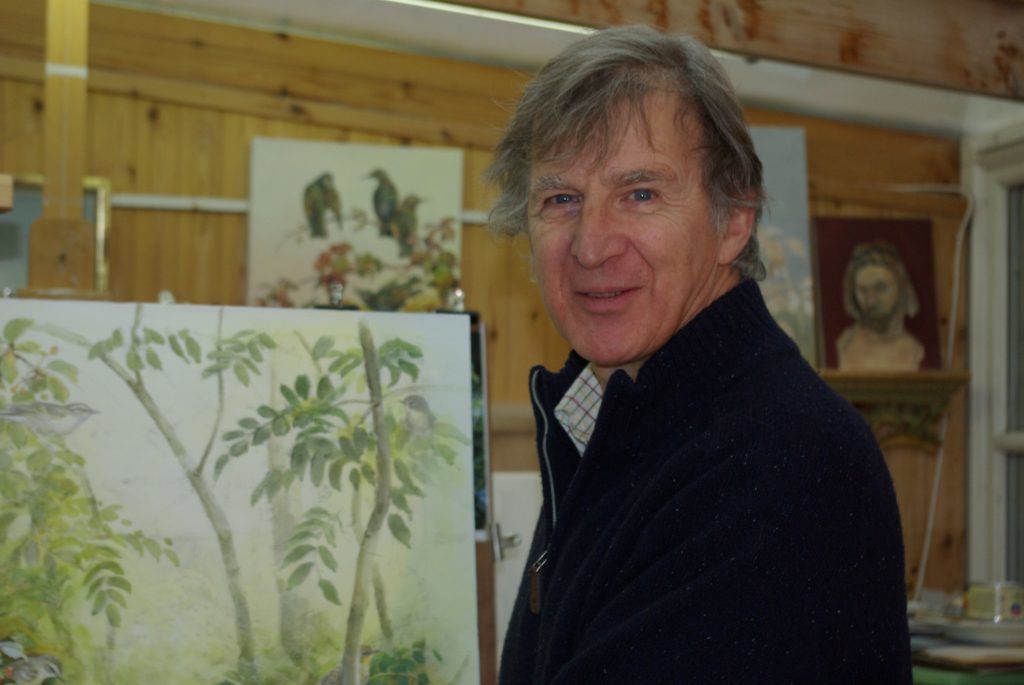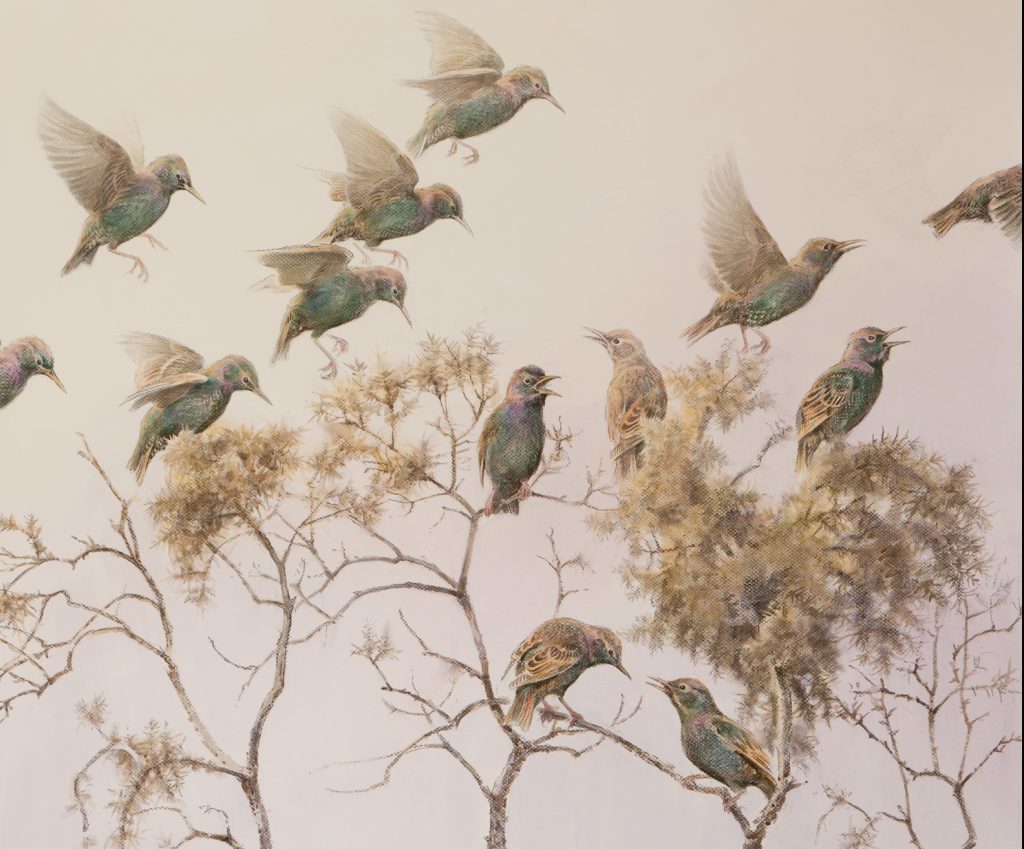As a long-established British wildlife artist, Jonathan Sainsbury has spent a lifetime observing and drawing the natural world. And these days some of his greatest inspirations can be found in Perthshire where he and his wife now live. Michael Alexander met him at home in Comrie.
The walls of Jonathan Sainsbury’s cosy farmhouse kitchen – within the former manse of the Episcopal Church in Comrie where wife Kate is a lay reader – are lined with drawings and paintings of wildlife.
Here in the heart of Highland Perthshire, towards the western end of Strathearn, Jonathan has access to miles of open moorland and woods that have inspired recent watercolour and charcoal drawings of everything from black grouse to starlings.
Years ago whilst living in his native England, and before he became one of Britain’s longest-established wildlife artists, Jonathan realised there was a commercial market amongst the London sporting fraternity for pictures of springer spaniels in the countryside, and he obligingly painted such classic images to make ends meet.
Today, however, some of Jonathan’s favourite creations are those “unsaleable” paintings that he’s inspired to compose whilst roaming the Perthshire countryside.
It might be a dead pheasant lying on the road with thrushes stealing berries from its split belly.
“You can only paint that if you’ve seen it,” he says.
Further afield, he’s been known to make a political statement by painting pictures of oiled seabirds.
But what underlines all of his work is a lifelong desire to combine his love of art with his love of nature.
A master of the “fleeting moment”, Jonathan’s atmospheric compositions might be inspired by that dead thrush he picked up on one of his solitary walks – or a hare kept in the freezer until the time was right to draw.
He might combine this with a sketch he made of a branch he saw when he visualised a small bird chasing spiders.
But closer to home, Jonathan also finds daily, somewhat eccentric, inspiration from a wild starling that has befriended the couple and lives in a cage in their kitchen.
The bird, which Jonathan calls Tweet and Kate calls Evan as in ‘eaven sent’, bathes in their sink and has breakfast with them each morning.
Jonathan explains: “Kate was mowing the lawn a couple of years back and found a pink blob just before she was about to thrash it with the blades.
“It was a two day old starling with its eyes still shut – looking like a little pink dinosaur!
“She brought it in and put it on the Aga to warm up. He was asking for food. Before we knew it we were out in the garden digging for worms and started feeding it. So when he opened his eyes for the first time and sees us, he doesn’t think he’s a bird – he thinks he’s a human!
“He’s been an absolute joy! I’d let him out the cage but he’d just crap all over you!” adds Jonathan mischievously.
Jonathan, 65, has had a close affinity with nature all his life, and traces this back to his “idealistic” upbringing in rural Warwickshire.
Raised in Stratford-upon-Avon by his mother – a former RADA-trained actress – who used to manage the Royal Shakespeare Theatre, and his father – a corn merchant who contracted polio after the war and struggled to walk thereafter – Jonathan has fond memories of growing up in a village that in retrospect seemed to be “stuck in time”.
“It was a bit like Victorian England at the turn of the century with one bus a week” he smiles.
“It meant I had this wonderful freedom that all young boys my age had. We went out the door and played. I used to catch things, trap things, dead or alive. – I didn’t really mind which. It was just life!”
But it was that simple life that sparked his interest in nature.
“Because you were small you were automatically down there with the animals, the bugs and the creepy crawlies,” he recalls.
“I spent a lot of time in the village pond picking out newts.”
Being dyslexic, Jonathan says that academically he was “no good” and would “never go on to become a vet or anything”.
But he showed a strong aptitude for art before the age of five and it quickly became the centre of his life.
“I used to get dead birds and take them to pieces to see how they worked!” he recalls.
“Everybody knew that I was the kid – the strange boy – who used to go to school with animals in his pocket.”
Jonathan’s teacher let him “sit in the corner and draw” in those early days.
But it was when he experienced the “horror story” of boarding school in Warwick between the ages of eight and 13 that art – which was not on the curriculum – became his salvation.
“I used to draw people I liked in heaven and people I didn’t like in hell. Then I was told I couldn’t do that because it wasn’t healthy!” he laughs.
“You’ve got to remember it was after the war. It was like a Monty Python sketch. The mentality was ‘you are going to go to war and lay down your life for your country’. If you said you like drawing they said, ‘well not here you don’t’. It was basically effeminate or something.”
Jonathan was relieved when his father let him go to his local comprehensive school at 13 where art was on the curriculum. It was around this time, in the 1960s, that he became aware of environmental issues – and the rise of the environmental movement – which he began to reflect in his work.
It wasn’t until he left school at 16, however, and went to art school in Leamington Spa, that Jonathan felt “reborn”.
He admits he was a “bit wild” in those days.
When he was involved in a near fatal car accident at 17 which saw the driver killed while he spent a long time in hospital, he came out a “slightly different person”.
He later dropped out of the Byamshaw School of Drawing and Painting after four terms because it was “too narcissistic”.
He went “back to nature” in the Stratford area, getting a job on a farm, followed by a job painting scenery sets at the theatre.
But by the age of 23, he finally decided he wanted to go to art school “properly” and successfully enrolled at Leeds Polytechnic after impressing interview staff with his version of an ornithopter – a life-sized owl you could get inside and (potentially) fly!
After graduating he started drawing wildlife for money – and the rest is history.
After being taken up by a gallery in Cirencester – where he started drawing his springer spaniels – he met his wife to be in North Devon and was persuaded by the gallery owner to follow in the footsteps of Scottish animal painter Archibald Thorburn with a trip to Scotland.
He spent that first night in the Comrie Hotel. Little did he know that a few years later the area would become their permanent home.
Jonathan and Kate, who have lived in their current home since 2002, have three grown up children.
Their son Louis, 30, who is profoundly brain damaged through meningitis contracted at birth, lives in Glasgow where he receives 24-hour care. He comes home every third weekend.
Daughter Daisy, 27, born in St Fillans, is a fellow in French modern poetry at Oxford University whilst Minty, 26, who studied architecture at Cambridge, is herself now a full-time artist with an interest in heritage and buildings.
Jonathan still likes to travel. He was in America last summer and this June he will take his Ark for Nature pop-up-pavilion to Inverness Cathedral, inviting schools, communities, arts groups, wildlife and countryside followers, to an exhibition that combines art for sale with wider reflection on nature.
It’s Comrie, however, that he is so pleased to call home.
“Inspiration is everywhere in Perthshire,” he smiles.
“I like weather. I like snow. I like rain. I like all those things that give me pictures. And I also love Comrie. It’s a fantastic community. As a place to live it’s lovely. We are so lucky.”
*This article appears in the spring edition of the Perthshire Living magazine.
